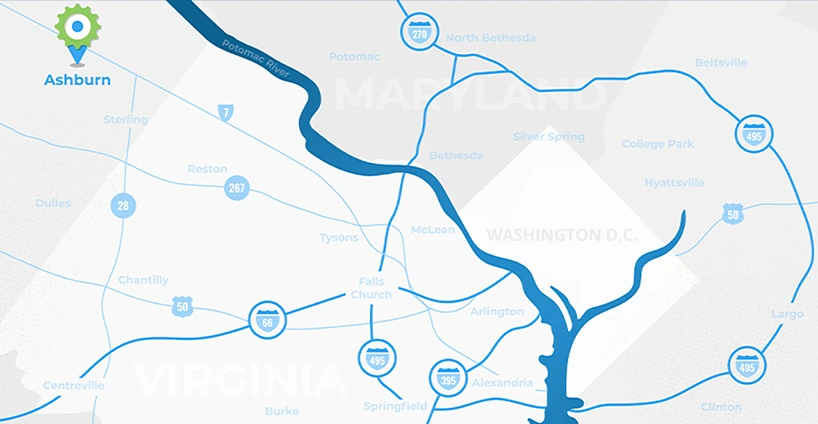How to Get Started with Email Marketing

The new year is well underway and, depending on who you are, your new year’s resolution is starting to waver. If that’s you, there’s no shame in switching your goal. Might we suggest trying a new marketing channel, like email marketing
Why Email Marketing is Better Than Social Media
You read that right. Email marketing is better than any social media marketing strategy you or your marketing experts could cook up. While top social channels might boast how many users they service a day or in a month, the fact is that email marketing consistently sees higher ROI. You’ll receive something like $42 for every dollar you spend on email marketing. Meanwhile, there’s estimated to be 3x more email accounts than Twitter and Facebook users - combined; email open rates absolutely smoke organic reach at 20% compared to a measly 6% organic reach on social.
The short of it is: while you are competing against every other email in your audience’s inbox, there’s no algorithm to game. It’s a channel you own almost as much as you own your website. No matter how flashy the latest social media platform is, email is too golden to brush aside.
Handpicked content: Hashtag Best Practices for Twitter, Instagram, & More
How to Set Up an Email Marketing Channel
Step 1: Select an Email Marketing Tool
First thing you need to realize is that you can’t actually run an email marketing strategy from your own inbox. That is, unless you plan on doing everything manually and welcome chaos (those people are terrifying). If, however, you’re doing this with the intention of intelligently growing your business, then you’re going to want to pick an email marketing software.
MailChimp is well recognized across all industries. It’s free up to 2,000 contacts. Although, we recommend jumping straight to their Essentials plan in order to remove the MailChimp branding and appear more professionally in your audience’s inbox. The Essentials plan additionally allows you to set up automations (also known as journeys) longer than a single step. Overall, we recommend MailChimp for small businesses just getting started with email marketing.
Handpicked content: Our Top 5 Tools of Agency Management
The software of choice at ImageWorks Creative, however, is Autopilot Journeys. Our favorite thing about it is right in the name. Autopilot Journeys has, in our opinion, a superior journey creation tool. It’s more intuitive and easier to add third-party apps like Trello and Typeform into your process. All that sophistication comes at a price, though. Their starting plan is just under $50 per month. So, all that power might actually be too much for what you need just now.
MailChimp & Autopilot Journeys are just two options, and there are countless others from Flo Desk to Moosend to MailerLite. Spend some time to really understand what you need from your email marketing software, which option works best for your business, and how you like to work.
Step 2: Import & Segment Contacts
Ideally, you’d have a handy list of your contacts, either from a CRM like Copper or a simple spreadsheet. Gather and export your info so you can accurately upload your contacts to your email marketing software of choice. (A CSV file type is usually the most helpful here, BTW.) Take time to make sure the info is being added to appropriate fields and you aren’t going to be wasting time correcting repeat mistakes. Something simple like mixing up first and last names is utterly annoying to correct.
After importing your contacts, take additional time to segment them. That is, create subcategories that you can use to better target the contact’s interests. These segments can be different kinds of subscribers, location-based, or a simple split of prospects vs converters.
Handpicked content: Our Best Web Design, Branding, & Marketing Advice From 2021
Lastly, make sure there’s a way for future contacts to get added to your mailing list. This can be a simple sign up form in your footer or, if you’re an e-commerce business, add it as an option presented after a user completes a purchase. However you’ll capture emails in the future, make a process where they’re accurately tagged and sorted so they become part of those segments you set up earlier.
Step 3: Develop a Prospect Journey
Ideally, you’ll go on to create multiple email journeys, such as on-boarding, off-boarding, lead magnet - the list goes on, as it should. However, you at minimum should have a Prospect Journey, also called a Lead Nurture Journey. This is a set of 4-7 emails you’ll send to contacts as soon as you’ve captured their email addresses. The goal of these emails is not to spam the contact with sales (that’ll have them unsubscribing - no bueno). Rather, these are gentle nudges down the path to conversion.
Handpicked content: How Can My Business Use Them to Convert More Customers
Your Lead Nurture Journey will look different depending on your company and brand voice. Some popular components can be a letter from the CEO, a freebie piece of gated content, or a message encouraging the contact to join a separate mailing list. An example of that last one might be they enter this journey because they filled out your contact form and you then encourage them to subscribe to your blog.
Lead Nurture Journeys should focus on the contact, their pain points, and how your business not only solves their problems, but also provides an awesome experience while doing so.
Step 4: Create an Email Blast Schedule
Outside of your journeys, these are consistent email content pieces you send out to your mailing list. If you didn’t segment your contacts back in step 2, now is the time to do that. Consider what type of content is best for getting and holding the attention of your various audience members. Sending content more specifically tailored to a contact's interests will get you better results than one general message they might not find compelling.
And there you have it, a basic email marketing set up! This will get you started with email marketing. However, it’s not a total set-&-forget kind of service. You’ll still want to monitor how your emails are performing as well as develop more journeys and email shares to provide more valuable content to your subscribers.
So, what’s one way you’re going to improve your email marketing this year?
By Jordan Latham
-- -- --
Over the next few months, this blog will focus on different marketing channels. We’ll break down some industry buzzwords, make key distinctions, and - like in today’s post - help you develop your own multi-channel marketing strategy. Subscribe to our blog so you don’t miss anything!





